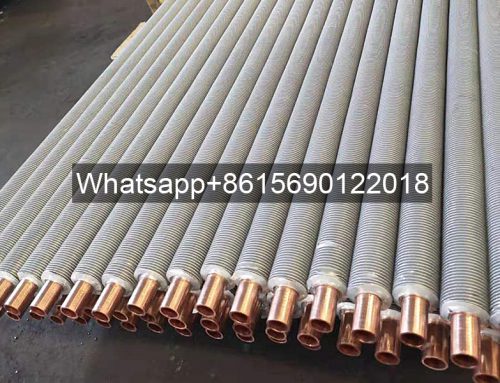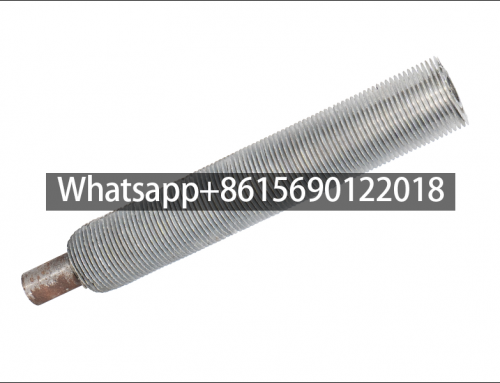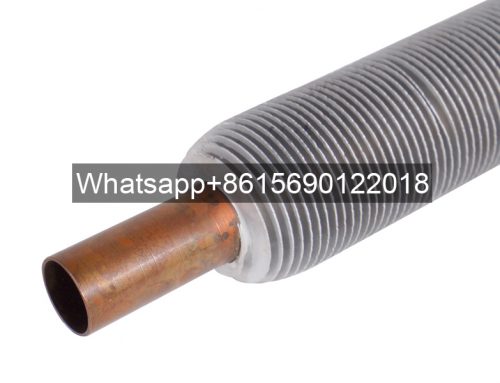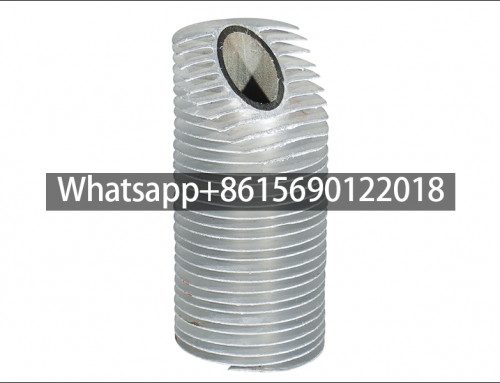Project Description

- Product Name: Bi-Metal Aluminum Seamless Extruded High Fin Ttubes for Evaporators
- Leave Your Message
Extruded Fin Tubes for Evaporator Applications

1. Structural features of extruded fin tubes
Bi-Metal Aluminum Seamless Extruded High Fin Tubes are a special type of fin tubes made of steel and aluminum. The base tube is usually made of steel tube, which has good strength and pressure bearing capacity. It can stably withstand the pressure of the internal medium and various external forces during the operation of the evaporator to ensure the stability of the entire structure.
The fin part is made of aluminum. Aluminum has excellent thermal conductivity and can quickly conduct heat away, which is crucial for the evaporator to efficiently complete the heat exchange task.
Through special processing techniques, such as mechanical expansion and hydraulic expansion, the aluminum fins are tightly attached to the outer surface of the steel tube, so that a good heat conduction channel is formed between the two, and the connection is firm. It is not easy to loosen or fall off under complex working conditions such as long-term alternation of hot and cold and fluid impact.
This steel-aluminum composite structure cleverly combines the strength advantage of steel with the thermal conductivity advantage of aluminum. At the same time, the presence of fins greatly increases the overall heat dissipation area of the tube. Compared with the bare tube, its heat dissipation area can be doubled, providing a strong structural foundation for the rapid exchange of heat in the evaporator.
2. Working principle of extruded fin tube
When the low-temperature and low-pressure liquid refrigerant to be evaporated enters the steel-aluminum composite fin tube inside the evaporator, the external heat source will contact the outside of the fin tube.
Due to the good thermal conductivity of the aluminum fin, the heat will be quickly transferred from the external heat source to the aluminum fin, and then through the tight joint surface between steel and aluminum, the heat will be further transferred to the refrigerant inside the steel tube. After absorbing heat, the refrigerant begins to change phase, gradually transforming from liquid to gas. In this process, it continuously absorbs heat from the outside, realizing the key function of the evaporator to transfer external heat to the refrigerant, thereby providing continuous power for the entire refrigeration cycle system.

Steel tube aluminum fin extruded fin tube
3. Performance advantages of extruded fin tubes
Efficient heat exchange: Aluminum Bimetallic fin tubes achieve efficient heat exchange efficiency with the excellent thermal conductivity of aluminum fins and greatly increased heat dissipation area.
In the evaporator, this means that the refrigerant can evaporate faster, improving the cooling speed and cooling capacity of the entire refrigeration system, allowing the evaporator to achieve the ideal cooling effect in a shorter time, and meeting the needs for rapid cooling in different application scenarios.
Corrosion resistance: The environment in which the evaporator is located may sometimes be more complex, such as the presence of a certain humidity or trace corrosive gases.
The aluminum fins in the Bimetallic fin tube will naturally form a dense aluminum oxide protective film on the surface, which has a certain resistance to some common corrosion factors. At the same time, if the steel tube part is properly treated with anti-corrosion, the entire fin tube can operate stably in a relatively harsh environment, extending the service life and reducing equipment failures and replacement costs caused by corrosion.
Lightweight and cost control: Compared with some fin tube structures that are made entirely of metal and have a high density, Bimetallic fin tubes take advantage of the relatively light characteristics of aluminum, so that the entire evaporator equipment can achieve a certain degree of lightweight while ensuring performance, which is more beneficial for some installation scenarios that require equipment weight.
The cost of aluminum is relatively low compared to some precious metals. In large-scale production applications, it helps to control the overall production cost of the evaporator and improve the market competitiveness of the product.
4. Application and maintenance of Extruded aluminum fins tube
It plays an important role in the fields of industrial refrigeration, refrigeration equipment evaporators in cold chain logistics and transportation, and can adapt to different working conditions and refrigeration scale requirements.
In terms of maintenance, due to its structural characteristics, it is necessary to regularly check the integrity of the fins to see if there is any deformation, lodging, etc. that affects the heat exchange efficiency; at the same time, pay attention to whether there are signs of looseness at the steel-aluminum joint, and whether there are corrosion marks on the surface of the tube body.
In daily use, it is also a very important maintenance measure to keep the external environment of the evaporator clean and avoid excessive accumulation of dust and debris on the surface of the fin tube that affects heat transfer. Through these reasonable maintenance methods, the steel-aluminum composite fin tube can be guaranteed to continue to stably perform its excellent performance in the evaporator.
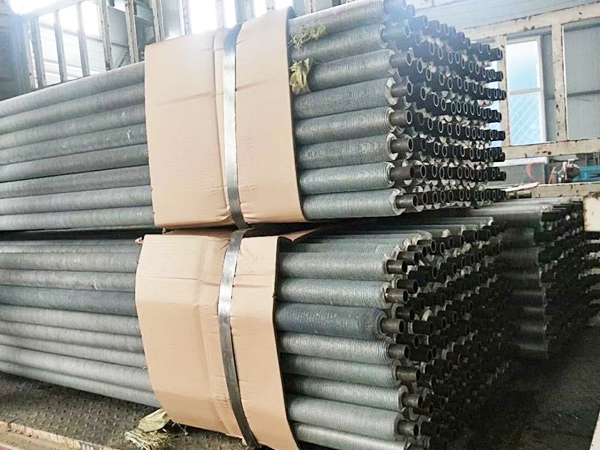
1. Extruded fin tubes Structural Characteristics
Extruded fin tubes are composite heat exchange elements consisting of a steel base tube and aluminum fins integrated through specialized manufacturing processes.
Key Components:
ComponentMaterialFunctionTechnical AdvantageBase tubeCarbon steelStructural supportHigh mechanical strength (30-50MPa yield strength) and pressure resistanceFinsAluminum alloyHeat transfer enhancementExcellent thermal conductivity (237 W/m·K) and lightweight properties
Manufacturing Process:
- Mechanical expansion: Achieves 0.05-0.1mm interference fit between materials
- Hydraulic expansion: Provides uniform radial pressure up to 300MPa
- Extrusion bonding: Creates metallurgical bond at 300-400°C processing temperature
2. Performance Parameters
ParameterTypical ValueMeasurement StandardFin thickness0.5-2.0mmISO 13705Fin height12-25mmASTM B546Fin density200-500 fins/meterHEI StandardsHeat transfer coefficient50-120 W/m²·KASME PTC 30Operating temperature range-40°C to 300°CEN 13445
3. Working Principle
The operational mechanism involves three-phase heat transfer:
- External heat absorption: Ambient heat contacts aluminum fins (thermal conductivity: 237 W/m·K)
- Interfacial conduction: Heat transfers through steel-aluminum interface (contact resistance
- Internal phase change: Refrigerant evaporation at 5-15°C below saturation temperature
4. Maintenance Requirements
Inspection ItemFrequencyAcceptance CriteriaFin deformationQuarterly<5% of total fins affectedSurface corrosionBiannuallyNo pitting >0.5mm depthBase tube integrityAnnualNo leaks at 1.5× working pressureFin cleanlinessMonthlyDust accumulation
5. Comparative Advantages
FeatureExtruded Fin TubeConventional Finned TubeWeight3.5-5.2 kg/m6.8-8.3 kg/mCorrosion resistance8-12 years service life5-7 years service lifeHeat transfer efficiency40-60% higherBaselineInstallation flexibilityCompatible with 90% standard evaporator designsLimited by weight


